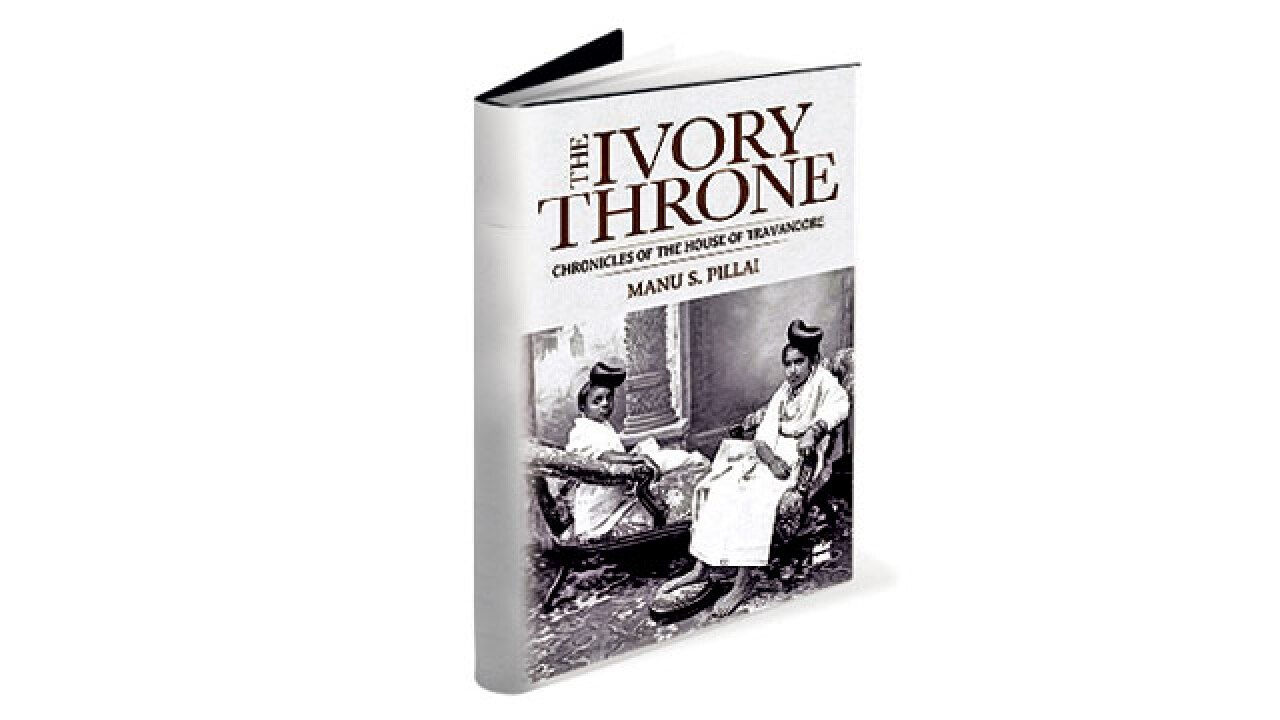
Book: The Ivory Throne: Chronicles of the House of Travancore
Author: Manu S. Pillai
Publishers: Harper Collins
Pages: 694
Rs: 699
History written by winners and men have rarely done justice to the contributions of women, even those women who were born high enough to occupy positions of supreme power. The story of Sethu Lakshmi Bayi, the maharani regent of the southern princely state of Travancore, between 1924 and 1931, fits this description on both counts.
During her reign, attempts were made to portray her husband, or in royal parlance, her consort, Rama Varma, as the power behind the throne. The coterie around her successor and nephew, Sri Chitra Thirunal, quickly and clinically marginalised the queen and her husband's influence in Travancore. So effective was the purge that few memorials can be found of this pathbreaking queen in Kerala even as schools, colleges, hospitals and cultural institutions honour the memory of Chitra Thirunal to this day.
In a brilliant debut, Manu S. Pillai has painstakingly pieced a forgotten but immensely significant "interregnum" when Sethu Lakshmi Bayi held court for the then child king, Sri Chitra Thirunal. Pillai restores the queen — who took charge of Travancore at a critical period and successfully steered her family and kingdom through a period of rapid social and political changes that left many other royals floundering — to her rightful place in history. He has unearthed a treasure trove of documents from the India Office Archives at the British Library, which, as he concludes, allows for a more dispassionate analysis of the regency as compared to local accounts, through the dispatches of a long line of British residents posted in Travancore.
In the first half of the 20th century, Travancore was a battleground of contesting communal interests. The Nairs had wrested for themselves a significant share of government jobs by displacing the Brahmins, but were now resisting a similar attempt by Syrian Christians, Ezhavas and Muslims for upward mobility and an equitable share in the pie. In a significant departure from her predecessors and her successor, Lakshmi Bayi departed from the practice of pitting community against community, and took a position that favoured equal opportunity for all. This was a landmark progressive measure, but it earned her the enmity of the upper-caste Nair community of the day.
Though the focus is on Lakshmi Bayi and the tumultuous years of the regency, the book opens with a wide but colourful sweep of Kerala history. Pillai delves into the arrival of the Portuguese, the decline of the royal families of Calicut and Cochin, the rise of Travancore and the matrilineal tradition to help the lay reader understand the epochal changes that were afoot in Travancore in the early 20th century.
Pillai's impeccable research shines through this work, thanks to the detailed footnotes, something you wouldn't find even in Kerala's celebrated historian A. Sreedhara Menon's bestseller A Survey of Kerala History. Pillai's scholarship and his felicity with words have combined to serve two important facets of history writing: making history more accessible and setting the record straight. The Ivory Throne is an exceptional work; the achievement falls into perspective when you realise that Pillai is just 25 years old.